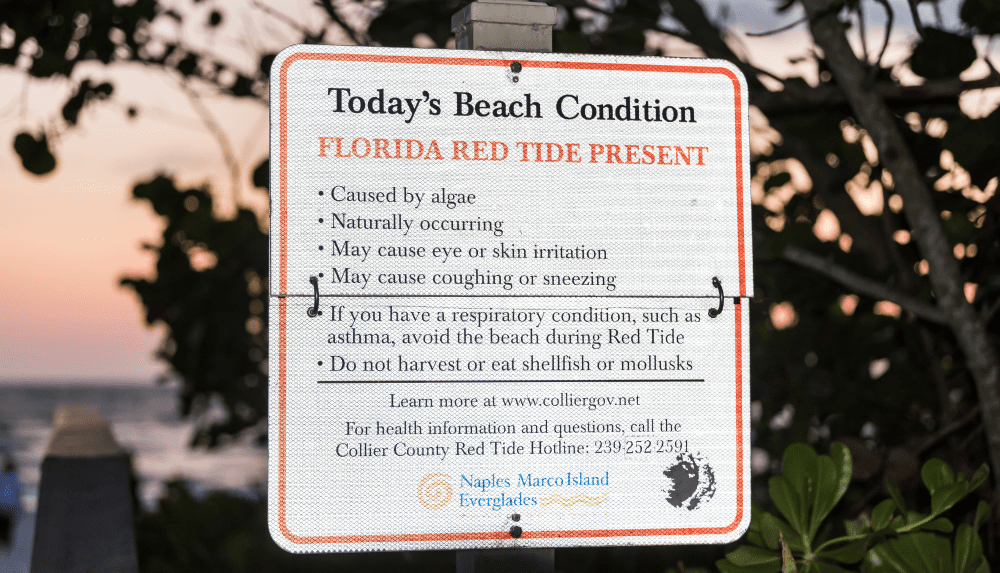Florida’s shorelines will likely be covered in dead fish for the foreseeable, as a toxic “red tide” returns. The environmental disaster that’s becoming a near-annual tradition is deadly to marine life, but it can also bring on unpleasant symptoms in humans walking along the shore.
The harmful algal bloom is known as a “red tide” because it can turn seawater a reddish-brown color, and it’s made up of several organisms including protists like algae and dinoflagellates. One of the most common culprits in Florida is Karenia brevis, which produces toxins known as brevetoxins.
Red tide can cause gastrointestinal and neurological problems in birds, marine mammals, fish, and even humans when it is accidentally consumed. If a person eats shellfish affected by the dinoflagellate algae, they can even develop paralytic shellfish poisoning (PSP).
The severity of PSP symptoms depends on how much of the toxin was consumed, but can include tingling of the face, fingertips and toes, headache, dizziness, and paralysis. Though rare, the Massachusetts Bureau of Environmental Health reports that there have been fatalities from respiratory paralysis associated with the condition.
Brevetoxins can also become airborne, meaning even just walking along the beach can bring on symptoms in humans including respiratory problems like coughing and congestion. Exposure can also lead to stinging of the skin and eyes, which – coupled with a shoreline littered with dead marine animals like whale sharks and dolphins – comes together for a very miserable day at the beach.

Florida’s red tide makes it unsafe for people to fish. Image credit: Kristi Blokhin / Shutterstock.com
Algal blooms, while unpleasant, are a natural part of life, but there have been questions raised about whether human activities have been the cause of particularly bad red tide spells in recent years. It could be that longer red tide seasons are connected to runoff as chemicals from farming, factories, and sewage treatment plants make their way into the ocean.
Runoff has also been linked to a giant, stinky, destructive blob of sargassum that’s headed for the US state. Made up of millions of tons of odorous seaweed, such masses have become increasingly nomadic in a warming ocean that’s being polluted, most notably by nutrient runoff from the Amazon and Mississippi.
In 2021, researchers attempted to tackle the red tide using something known as clay flocculation. It involves spraying the water surface with a slurry of modified clay particles and seawater that binds to the algae and eventually sinks to the seabed and gets buried.
The tests were the beginning of a six-year Initiative, with hopes that they might soon have early-stage technologies ready to deploy in the field. Fingers crossed there will soon be some relief for Florida’s dead-fish-laden shores.
Source Link: “Red Tide” Of Toxic Organisms Storms Florida